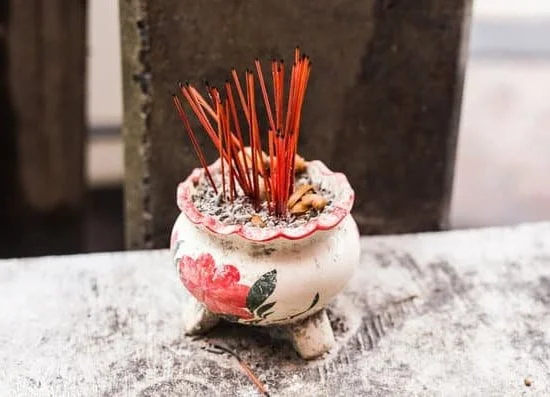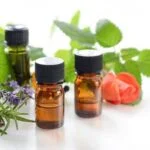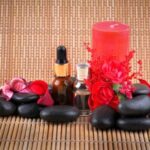Are you looking to incorporate the healing powers of aromatherapy into your daily routine? You’ve come to the right place. In this article, we’ll explore the world of aromatherapy essential oil recipes and how they can be used for various purposes, such as relaxation, stress relief, and energy enhancement.
Aromatherapy has a rich history and has been used for centuries as a natural remedy for a wide range of ailments. Essential oils are at the heart of aromatherapy practice, and this article will delve into their origins, benefits, and uses.
Essential oils are highly concentrated plant extracts that have been praised for their therapeutic properties. In aromatherapy, these oils are used to promote physical and emotional well-being through various methods such as inhalation, massage, or diffusion.
Throughout this article, we’ll provide step-by-step instructions on how to create custom essential oil blends for diffusers, massage oils, room sprays, bath recipes, and inhalers. We’ll also discuss how to choose the right essential oils based on your specific needs and ensure they are of high quality.
Whether you’re new to aromatherapy or a seasoned enthusiast looking for new recipes to try out at home, this article will serve as a valuable resource for creating your own aromatic blends with ease. Plus, we’ll also cover safety tips to keep in mind when using essential oils in order to enjoy their benefits responsibly. So get ready to embark on a journey into the world of aromatherapy and essential oils with us.
Choosing the Right Essential Oils
When it comes to choosing the right essential oils for your aromatherapy needs, it’s important to consider the specific benefits you are looking to achieve. Whether it’s relaxation, energy, stress relief, or something else, different essential oils have unique properties that make them well-suited for various purposes. Here are some tips for selecting the best essential oils:
- Research the benefits: Before choosing an essential oil, research its therapeutic properties and how they can address your needs. For example, lavender is known for its calming effects, while peppermint is invigorating.
- Quality and purity: Look for high-quality, pure essential oils to ensure effectiveness and safety. Check for reputable brands that provide information on the sourcing and production of their oils.
- Aromatherapy blends: Consider creating custom blends of essential oils to achieve your desired results. This can involve mixing complementary scents or combining oils with similar therapeutic properties.
In addition to these tips, it’s important to be mindful of any potential allergies or sensitivities you may have when selecting essential oils for aromatherapy.
When using essential oils in aromatherapy, it’s crucial to choose high-quality products from trusted sources. By doing so, you can fully experience the therapeutic benefits of aromatherapy without compromising your health and well-being. Whether you’re new to aromatherapy or a seasoned enthusiast, taking the time to select the right essential oils will enhance your overall experience and help you achieve your desired results.
Keyword: aromatherapy essential oil recipe
Aromatherapy Diffuser Recipes
Creating your own essential oil blend for a diffuser is a simple and effective way to enjoy the benefits of aromatherapy. By combining different essential oils, you can customize scents that suit your specific needs, whether it’s relaxation, mental clarity, or mood enhancement. When making your own aromatherapy diffuser recipe, it’s important to choose high-quality essential oils that are pure and free from synthetic additives.
To create an aromatherapy diffuser recipe, start by selecting the essential oils that will achieve your desired effect. For example, lavender and chamomile are excellent choices for promoting relaxation and better sleep, while peppermint and eucalyptus can help with mental clarity and focus. Research the therapeutic properties of different oils to understand how they will benefit you.
Once you have chosen your essential oils, follow these steps to create your customized aromatherapy diffuser blend:
- In a dark glass bottle, combine 20-30 drops of essential oil.
- Swirl the bottle gently to mix the oils thoroughly.
- Allow the blend to sit for at least 24 hours before using it in a diffuser.
Using an ultrasonic or nebulizing diffuser, add water according to the manufacturer’s instructions and then add 3-5 drops of your custom essential oil blend. Turn on the diffuser to enjoy the aromatic benefits of your homemade aromatherapy blend.
By creating your own aromatherapy diffuser recipes at home, you can tailor the scents to meet your specific needs. Whether you want to unwind after a long day or boost your energy levels in the morning, customizing your essential oil blends allows you to fully experience the therapeutic benefits of aromatherapy.
| Essential Oil Blend | Effect |
|---|---|
| Lavender + Chamomile | Promotes relaxation and better sleep |
| Peppermint + Eucalyptus | Enhances mental clarity and focus |
Aromatherapy Massage Oil Recipes
Aromatherapy massage oils can be a great way to experience the benefits of essential oils while also enjoying a soothing and relaxing massage. By blending essential oils with carrier oils, you can create custom massage oils that target specific ailments or promote overall relaxation. The key is to choose the right essential oils and carrier oils for your desired effect.
When creating aromatherapy massage oil recipes, it’s important to start with high-quality, pure essential oils. Depending on the purpose of your massage oil, you may want to select essential oils known for their calming properties (such as lavender or chamomile) or invigorating effects (such as peppermint or eucalyptus). Additionally, carrier oils like coconut oil, sweet almond oil, or jojoba oil can provide the base for your blend and offer their own unique benefits for the skin.
To ensure safety and effectiveness, always dilute your essential oils properly and do a patch test on a small area of skin before use. This will help you determine if you have any sensitivities to the specific blend you’ve created. Keep in mind that some essential oils are not suitable for use during pregnancy or for certain medical conditions, so it’s important to do research and consult with a healthcare professional if needed.
Finally, don’t be afraid to experiment with different aromatherapy massage oil recipes until you find the perfect blend for your needs. Whether it’s for relaxation after a long day or relief from muscle tension, there are countless combinations of essential oils and carrier oils that can cater to your specific preferences and requirements.
| Essential Oils | Carrier Oils |
|---|---|
| Lavender | Coconut Oil |
| Peppermint | Sweet Almond Oil |
| Eucalyptus | Jojoba Oil |
Aromatherapy Inhaler Recipes
Making your own aromatherapy inhalers is a fantastic way to take the benefits of essential oils with you on-the-go. Whether you need help with allergies, stress relief, or cold symptoms, there’s an inhaler recipe for you.
Creating the Inhaler
To make an aromatherapy inhaler, you will need a blank inhaler tube, which consists of a tube with a cotton wick inside that holds the essential oil blend. Start by adding 15-25 drops of your chosen essential oils onto the cotton wick. Make sure to use oils that are safe for inhalation and suitable for the purpose you intend (e.g. eucalyptus for respiratory support or lavender for relaxation).
Inhaler Blend Ideas
For allergy relief, consider blending peppermint, lavender, and lemon essential oils. This combination can provide relief from congestion and inflammation. To combat stress and anxiety on-the-go, try combining frankincense, bergamot, and ylang-ylang essential oils in your inhaler. Feel free to experiment with different blends until you find one that works best for you.
Tips for Using Your Inhaler
When using your aromatherapy inhaler, take slow deep breaths through the nose while holding the inhaler close to your nostrils. Use it as needed throughout the day to experience its benefits. Remember to replace the cotton wick every few months and keep your inhaler out of direct sunlight or heat to preserve its efficacy.
By following these simple instructions and experimenting with different blends, you can create custom aromatherapy inhalers that cater to your specific needs. The portability of these inhalers makes them a convenient and effective way to incorporate essential oils into your daily routine.
DIY Aromatherapy Room Sprays
Creating the Perfect Aromatherapy Room Spray
To create your own aromatherapy room spray, you will need a few simple ingredients. Start with distilled water as your base, and then add a splash of witch hazel to help emulsify the essential oils. Finally, select your favorite essential oils based on the mood or ambiance you want to create in the room. For example, lavender and chamomile are great for promoting relaxation and sleep, while citrus oils like lemon and orange can be invigorating and uplifting.
Recipe Ideas for Aromatherapy Room Sprays
One popular recipe for an aromatherapy room spray is a calming blend that combines 10 drops of lavender essential oil, 5 drops of chamomile essential oil, and 5 drops of cedarwood essential oil. Simply mix these oils with water and witch hazel in a spray bottle, shake well before use, and spritz around the room to enjoy a soothing atmosphere.
For those wanting to freshen the air, consider creating a refreshing room spray using 10 drops of lemon essential oil, 5 drops of peppermint essential oil, and 5 drops of eucalyptus essential oil. This blend not only neutralizes odors but also promotes mental clarity and alertness.
Tips for Using Aromatherapy Room Sprays
When using homemade aromatherapy room sprays, it’s important to shake the bottle well before each use to ensure that the oils are evenly dispersed in the water. Additionally, test your room spray on a small area first to make sure it doesn’t stain or damage fabrics or surfaces. Always store your room spray in a cool, dark place away from direct sunlight to preserve the potency of the essential oils.
By following these simple DIY recipes and tips for usage, you can easily incorporate the benefits of aromatherapy into your home with personalized room sprays tailored to your specific preferences.
Aromatherapy Bath Recipes
Aromatherapy baths are a luxurious and effective way to relax, rejuvenate, and promote overall well-being. By incorporating essential oils into bath salts, bombs, and oils, you can create a spa-like experience in the comfort of your own home. These bath recipes can be tailored to suit your specific needs, whether you’re looking to soothe sore muscles, moisturize your skin, or simply unwind after a long day.
To create a basic aromatherapy bath, start by selecting a carrier oil such as jojoba, coconut, or almond oil. Add a few drops of your chosen essential oil to the carrier oil and mix well. Lavender is an excellent choice for relaxation, while eucalyptus is great for respiratory support. Once blended together, add this mixture to your bath water and enjoy the therapeutic benefits of aromatherapy.
For an indulgent treat, consider making your own bath bombs with essential oils. Combine baking soda, citric acid, Epsom salts, cornstarch, and your desired essential oil blend. Then slowly add this mixture to wet ingredients such as coconut oil and water until it forms a moldable consistency. Press the mixture into molds and let them dry thoroughly before using them in your bath.
When creating aromatherapy bath recipes at home, it’s important to note that not all essential oils are safe for direct skin contact or use in baths. Always research the specific properties and cautions of each essential oil before incorporating it into your DIY creations for safe use.
Essential Oil Safety Tips
In conclusion, incorporating aromatherapy and essential oils into your daily wellness routine can have numerous benefits for both the mind and body. From promoting relaxation to boosting energy levels, there are endless possibilities for using these natural remedies. By following the tips in this article, you can confidently choose high-quality essential oils that suit your specific needs and create custom blends for diffusers, massage oils, inhalers, room sprays, and bath products.
It’s important to note that while essential oils have many positive attributes, they must be used safely and responsibly. This includes being mindful of proper dilution methods, storage practices, and understanding any potential risks associated with using specific oils. Additionally, certain precautions should be taken when using essential oils around children, pregnant women, or pets. By taking these safety guidelines seriously, you can fully enjoy the benefits of aromatherapy without any adverse effects.
With the knowledge gained from this comprehensive guide on aromatherapy essential oil recipes and safety tips, you can confidently embark on your journey to improving your overall well-being through natural means. Whether you’re seeking relaxation, relief from stress or pain management, incorporating these DIY essential oil recipes into your self-care routine is a wonderful step towards achieving holistic wellness. With consistency and care, aromatherapy can become an integral part of living a balanced and healthy lifestyle.
Frequently Asked Questions
How Do You Make Aromatherapy Essential Oils?
Aromatherapy essential oils are typically made through a process of steam distillation or cold pressing, depending on the botanical material being used. This method involves carefully extracting the aromatic compounds from plants to create highly concentrated oils with therapeutic properties.
What Are the 10 Best Essential Oils to Try for Aromatherapy?
The 10 best essential oils for aromatherapy include lavender, peppermint, eucalyptus, tea tree, lemon, chamomile, rosemary, bergamot, frankincense, and ylang-ylang. These oils are popular for their various benefits such as promoting relaxation, easing stress, and improving sleep quality.
How Do You Blend Essential Oils for Aromatherapy?
Blending essential oils for aromatherapy requires careful consideration of each oil’s scent and therapeutic properties. It’s important to start with a base note oil (like cedarwood or patchouli), add a middle note oil (such as lavender or rose), and finish with a top note oil (like bergamot or lemon).
Experimentation and proper dilution are key to creating balanced blends that work well together for specific purposes.

Are you looking for a natural way to improve your health and wellbeing?
If so, aromatherapy may be the answer for you.





